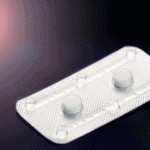
Emmanuel ArchibonghealthcareJanuary 31, 2021
The concerns that the risk factors of prostate diseases have tripled over time is founded on the threatening facts that in 2008, there were estimated to be 903,000 new cases of prostate cancer and 258,000 prostate cancer deaths making it the second most commonly diagnosed cancer in men and the sixth leading cause of male cancer death.
Reports have shown that many developing countries that have long battled with largely communicable diseases are now also facing higher occurrence of non-communicable diseases; one of which is prostate cancer.
In this article, we explore;
Although the prevalence of prostatic diseases has generated little or no attention among policy makers, the threat it poses to our healthcare system is quite enormous.

Maintaining a healthy diet is crucial for overall well-being, including prostate health. The following are some of the best foods that are beneficial to prostate health:
In addition to incorporating these foods into your diet, it’s essential to maintain a balanced diet rich in fruits, vegetables, whole grains, and lean proteins while limiting processed foods, red meat, and excessive consumption of alcohol and caffeine. Consulting with a healthcare provider or a registered dietitian can provide personalized guidance on optimizing your diet for prostate health.

The statistics is startling that not only is prostate cancer a global phenomenon; it has become a national concern. In Nigeria, as much as 11% of all cancer cases are reported to be of the prostate, whereas as many as 25% and 12% of adult Nigerians were reported to have BPH and Prostatitis, respectively.
Black males are more prone to prostatic cancer, having a mortality rate of 240% higher than White males. Mortality figures are not readily available from Nigeria, but they are presumably and anecdotally quite high.
Several studies have shown that prostatic diseases may be associated with conditions such as obesity, diabetes, insulin resistance, hypercholesterolemia, and hypertension, the prevalence of which are reportedly high in Nigeria. These diseases are amenable to lifestyle modifications in both prevention and treatment strategies.
The prostate gland is a walnut-shaped gland that ordinarily weighs approximately 26g (grams) at the end of puberty. It is situated right in front of the rectum. The urethra runs through the centre of it, taking urine from the bladder to the penis.
Androgens are the major factors required for the growth and development of the prostate. The prostate gland secretes the fluid that carries the sperm. Prostatic fluid accounts for up to 30% of the volume of semen, and its production is the primary role of the prostate.
Prostatic fluid constituents ensure the nourishment and proper motility of sperm. Hence, prostatic problems are akin to only the male gender.
Three major disorders that afflict the prostate gland are;

The risk factors associated with prostate cancer are as follows:
While ages forty and below have very rare cases, 29% of cases are recorded between the 41 – 60yrs mark and 67% of cases recorded at the 61 years and above age margin. Following from this, the risk age is 40 years while the higher risk age is 60 years.
In cases of heredity, the risk doubles with First Degree Relative (FDR) and up to fourth generation of FDR.
There is a much higher occurrence of cases in the Black population both domiciled in Africa and the Diaspora. As stated earlier, Black males are prone to prostatic cancer at a rate of 240% higher than their White counterparts. Jamaican males have the highest mortality rate. There is a lower incidence of clinically evident diseases of the prostate in Japan and China.
Foods with high saturated fat increase the risk of prostatic cancer. Obesity, which is the result of uncontrolled consumption of high saturated fatty food, is a precipitator to several health issues including prostate cancer.
Obesity increases calcium absorption which in turn leads to increased likelihood of developing prostate cancer. Obesity also naturally lowers Prostate Specific Antigen (PAS) levels to prevent effective screening of the rectal area.
Physicians have a more difficult time performing complete digital rectal exams to diagnose the disease. Obese men have larger prostates, increasing the surface area that prostate cancer could occur over time. However, foods with phytoestrogens properties reduce the risks of prostatic diseases.
Prostate screening tests and investigations include the following:
For the purpose of readership, we will consider only two of the above-mentioned tests; PSA test and Prostatic biopsy [Transrectal Ultrasound (TRUS) and Biopsy]. During investigation, some other routine questions ought to be asked. However, for population screening, below is a matrix for successful population screening programme.
It is ideal to note that the approved test for the investigation and screening of prostatic problems as well as to test asymptomatic men for prostate cancer is Prostate Specific Antigene (PSA) Test in conjunction with Digital Rectal Examination (DRE).
You can Speak to a Doctor to learn more about the aforementioned prostrate tests to determine which is best suited for your needs.
The prostate-specific antigen (PSA) test is a vital tool in the detection of prostate cancer, the second most common cancer among men worldwide. This blood test measures the levels of PSA, a protein produced by the prostate gland, in the bloodstream.
While elevated PSA levels can indicate prostate cancer, they can also be caused by other factors such as benign prostatic hyperplasia (enlarged prostate) or inflammation. Therefore, the PSA test is not definitive but serves as a screening tool, often prompting further evaluation such as a digital rectal exam or prostate biopsy.
It’s essential for men, especially those over 50 or at higher risk, to discuss the benefits and limitations of the PSA test with their healthcare provider to make informed decisions about prostate cancer screening. Regular screening can lead to early detection and better treatment outcomes, highlighting the importance of the PSA test in men’s health ca
PSA Test is used to measure the level of PSA in the blood to disclose a patient’s prostatic condition. The result is reported in nanograms of PSA per milliliter of blood (ng/ml).
The PSA is elevated in men with prostatic problems. Once the result is greater than 4ng/ml, there is a 22% probability of cancer; and a reading greater than 10ng/ml could amount to 63% probability of cancer.
However, some benign and non-cancerous conditions can cause the PSA to rise such as Prostatitis (inflammation of the prostate) and Benign Prostatic Hyperplasia (BPH) which is the enlargement of the prostate.
PSA testing has proven to be a veritable tool in the identification of prostatic problems. However, there are limitations to the test as have been stated earlier.
PSA tests are not strictly for the detection of prostate cancer only. It can be used for the examination of benign enlargement and inflammation of the prostate gland in cases of infections.
Limitations of this test include a high false-positive rate (showing that it could incorrectly indicate that a particular condition is present).
This is why it is recommended that measured tests be carried out overtime to ensure correct diagnosis. As a matter of fact, only about 25% of men with elevated PSA of between 4ng/ml and 10ng/ml will have prostate cancer identified on prostate biopsy and 75% may not.
In the same vein, another limitation bothers around the inability of the test to specifically detect and discriminate between aggressive high-risk cases and non-malignant low-risk cases.
This may lead to a situation of overtreatment in up to 50% of men. We already mentioned other benign ailments that could be associated with a high PSA. This is why we have recommended in this article that both PSA test and prostate biopsy be conducted.
As soon as prostate cancer has been diagnosed and assigned a cancer grade (that is, the extent of spread of the cancer in the body), PSA is used to determine the kind of treatment to be administered, whether prostatectomy (the removal of the prostate gland) or external beam radiation (chemotherapy radiation treatment).
Furthermore, the need for other investigation processes like bone scan or CT scan will depend on the PSA and prostate biopsy result.
It is ideal to note that early detection and treatment may save lives and avert future cancer related illnesses.
It is mandatory to point out to the asymptomatic man that the potential disadvantages of an abnormal result have no proven benefits to screening.

Prostate biopsy is the removal of fluid in the prostate to test for diseases of the prostate. It is mostly done after the PSA testing and evaluation. Elevated PSA most frequently triggers biopsy.
As a matter of statistics more than 1.2 million prostate biopsies are performed yearly in the United States. About 30% of men referred for biopsy are diagnosed with prostate cancer.
In the case of transrectal ultrasound, digital rectal examination (DRE) is performed which helps to accurately stage local diseases. In this case, an ultrasound probe with automated biopsy gun is used to take up to 3 cores of prostate tissue, with which examination is carried out on. An antibiotic cover is required to reduce the risks of infections.
Conversely, the shortcomings of Standard Systematic Prostate Biopsy are:
However, a major drawback of Prostate Biopsy is its ability to detect high-grade disease while avoiding low risk diseases.
Prostate Biopsy is performed when PSA greater than 10ng/ml and there is clinical suspicion that there may be cancerous growth. Also, Prostate Biopsy is sensitive at diagnosing metastases.
Premature morbidity and mortality reduction should be the centrepiece of any policy strategy aimed at the prevention and management of prostatic diseases, especially in developing economies like Nigeria.
Such policies should have clear provisions that are local, inclusive and reachable. Since the populace of these developing nations are below poverty level, testing and screening for prostate diseases should be conducted free of charge in order to encourage health awareness. Counselling and preventive treatments should be done early and given freely if possible.
In many sub-Saharan African countries, finely drafted policies have no impact if there is no political driving force to facilitate its implementation. Therefore, our medical unions and associations should become pressure groups to help push the agenda of policy inclusion as it concerns prostate health into legislative and executive procedures.
People with a higher risk of prostate cancer, especially Blacks, should limit their calcium intake. Regular and increased exercise can also help to protect against aggressive forms of prostate cancer.
If prostate cancer in an obese man is of low risk, devoting a few months to weight loss prior to treatment may result in a better outcome. Obese men should be educated about their increased risk of recurrence after having a procedure to remove the cancer.
Urinary Tract Infect (UTI) and Sexually Transmitted Infection (STI) should be prevented. The chances of having prostate diseases are well reduced with safer sex and urinary hygiene.
Early detection of any disease (and in this case prostate cancer) is the key to a potential cure. Prostatic problems require careful clinical history and thorough examination.
While PSA testing and prostatic biopsy is still the mainstay of detection, different modalities of preventive treatment can be inferred from the risk factors identified herein. At the heart of prostate health are lifestyle decisions, therefore a conscious adherence to healthy lifestyle choices could avert the dangers of prostatic diseases.
Medically reviewed by Dr. Ngong Cyprian
If you found this article interesting, you can read up more articles on cancer below:
10 Things to Know about Breast Cancer
The Prevalence of Childhood Cancer
ABOUT THE CO-AUTHOR
Dr. Ngong Cyprian is a medical doctor, COVID-19 volunteer frontline worker and a member of the West African College of Physicians. Dr. Cyprian is enthusiastic about lifestyle medicine. He is also the author of Memoirs of a Genie.
NutritionFebruary 5, 2025
MedicationFebruary 5, 2025








